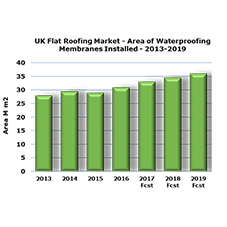The type of roofing selected for buildings has become a major factor across the whole of the construction industry. Homeowners and developers have to take into account various factors such as cost, aesthetics, longevity and sustainability when selecting what roof materials to choose. From natural materials like slate and wood to manmade products such as asphalt, sheet metal, and plastic polymers; I have decided to look at the pros and cons of the various options, and what they can offer.
Firstly it is important to recognise that some types of roofing may be better suited to your house than others. You have to consider that factors such as the slope of the roof could limit your choices. Below is a list of the most common roofing materials available.
Asphalt Shingles
The most popular roof type for the residential market today is asphalt shingles. They are made from either an organic paper fiber matt or fiberglass. Both of these options offer good resistance against the elements, such as cold weather and strong winds. asphalt is also not as expensive as other roofing materials, which is of course extremely important.
However there are things to consider before choosing asphalt. By nature this material not very durable, and it may need more maintenance work done to it than other roofing materials. Furthermore, asphalt does not fall in line with the modern trend of being eco-friendly, as the asphalt material is often taken to landfills rather than recycled.
Metal
Whereas durability was an issue for asphalt, metal lasts longer. It is also very resistant to the elements. Metal also gets a thumbs up for eco-friendliness, as it is recycled when replaced. However, metal falls down on cost. It is extremely expensive to have steel or copper materials on your roof, and this is important to consider before choosing metal.
Clay Tile
Clay tiles are a popular choice as they can last a very long time and are extremely low maintenance. They are also aesthetically pleasing on the eye, and are suitable for homes with a modern, ‘clean’ look. The biggest drawback for clay tiles is the weight. They are very heavy which means extra roof support will be required. This is reflected in the cost, as clay tiles are one of the most expensive roofing materials on the market.
Concrete Tile
Concrete tiles are often chosen over clay as they are cheaper but maintain the same low maintenance requirements. They also have a long lifespan and offer good protection against rot. Early types of concrete roofing were prone to problems such as material curling and even colour changing, and although with new technologies this is not as common, it is still something to bear in mind.
Slate
Slate is one of the oldest and most recognisable materials available. It is very durable and can be laid out in a variety of patterns, leaving a greater scope for design for the homeowner. Like tile, slate can be very heavy, sometimes requiring expensive extra support. It, to, is breakable enough that walking on it is difficult for a non-professional, complicating such tasks as rooftop maintenance, gutter cleaning and painting.
Wood shingles & Shakes
One of the obvious advantages to using wood roofing is it offers great energy savings. It helps to insulate the attic, and it allows the house to breathe. However, out of all of the materials mentioned so far, wood requires the most maintenance, and mold and rot can be a big problem.
It is extremely important to select the correct roofing materials for your home. Your roof is your home’s single most important defence when it comes to protecting it from the elements, so it is essential that you carefully consider which is the best fit for you.
Related Blog Articles





